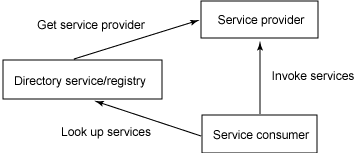 The Apache CXF framework helps you to develop web services using standards based programming model and also provides a flexible deployment model for deploying web services. Developing SOAP and RESTful applications can be made easy by using Apache CXF framework. However, getting started with developing web services using the Apache CXF framework is not easy.
The Apache CXF framework helps you to develop web services using standards based programming model and also provides a flexible deployment model for deploying web services. Developing SOAP and RESTful applications can be made easy by using Apache CXF framework. However, getting started with developing web services using the Apache CXF framework is not easy.
This is the first book that gives details on how to use the Apache CXF framework for developing SOAP and REST web services. It is a hands-on practical guide that simplifies working with CXF framework as it covers all major aspects with real-world examples. The chapters cover the various CXF features in detail and each has systematic steps with practical, simple examples to implement these features on your web services.
The book introduces the Apache CXF framework and its features such as Frontend API, Data Bindings, Transports, Spring-based configuration, and CXF tools. It also has chapters on SOAP and RESTful services. It will help you create RESTful services that support XML as well as the widely accepted Java Script Object Notation (JSON) format. It explains the components of CXF architecture that help developers customize the Apache CXF framework to suit the target application. The book covers both code-first and contract-first approaches for service deployment. You will see how to develop services in a flexible deployment model offered by CXF, unit test them in a stand-alone environment, and finally promote them in an application server environment.
The instructions in this book will help developers to build their application according their requirements by using any of the frontends supported by Apache CXF framework. The various CXF frontend APIs covered in this book provide a wide variety of options in developing and deploying your application.
The book introduces some advanced concepts such as Interceptors and features that will add extra capability to your service component. It will help you take advantage of different transport features offered by the CXF runtime such as HTTP, HTTP(S), and JMS protocols.
Finally, the book mentions various tools that help developers creating web services as well as creating Java and JavaScript-based web services clients which invoke a real-world .NET web service. These tools are standard batch files that can be easily executed from the Windows command shell by following the instructions in the book.
What you will learn from this book
- Become familiar with the different features of Apache CXF architecture and set up the CXF environment
- Develop a simple web service using CXF-based Spring configuration
- Build a web service using contract-first and code-first approaches in simple frontend APIs such as JAX-WS
- Create dynamic web service clients by using various CXF frontend APIs
- Develop web services with different transports by configuring various CXF transports such as HTTP, HTTP(S), JMS, and CXF Local
- Create RESTful services that support JSON and XML as the message formats
- Develop services with features such as Interceptors by implementing advanced CXF features
- Attain configuration and dependency management by integrating web services with the de facto Spring framework
- Unit test POJO services in a stand-alone environment as well as promote applications to the Tomcat container for production ready deployments
- Speed-start developing web services by using CXF tools effectively
- Basics of Spring framework and IOC container for readers who are not acquainted with Spring framework





